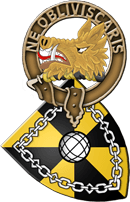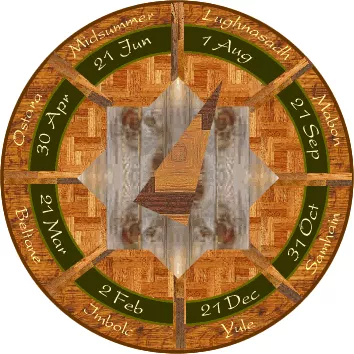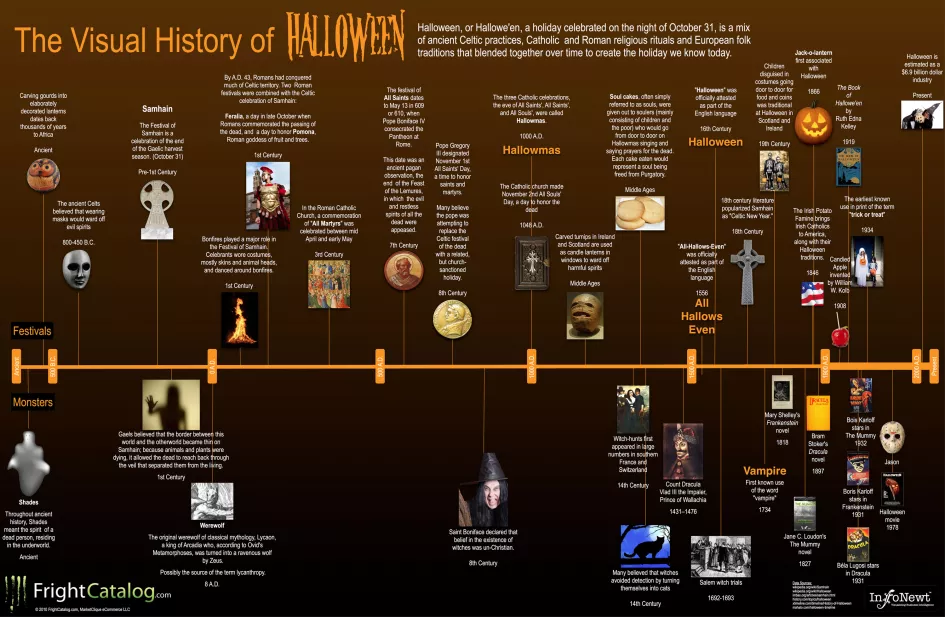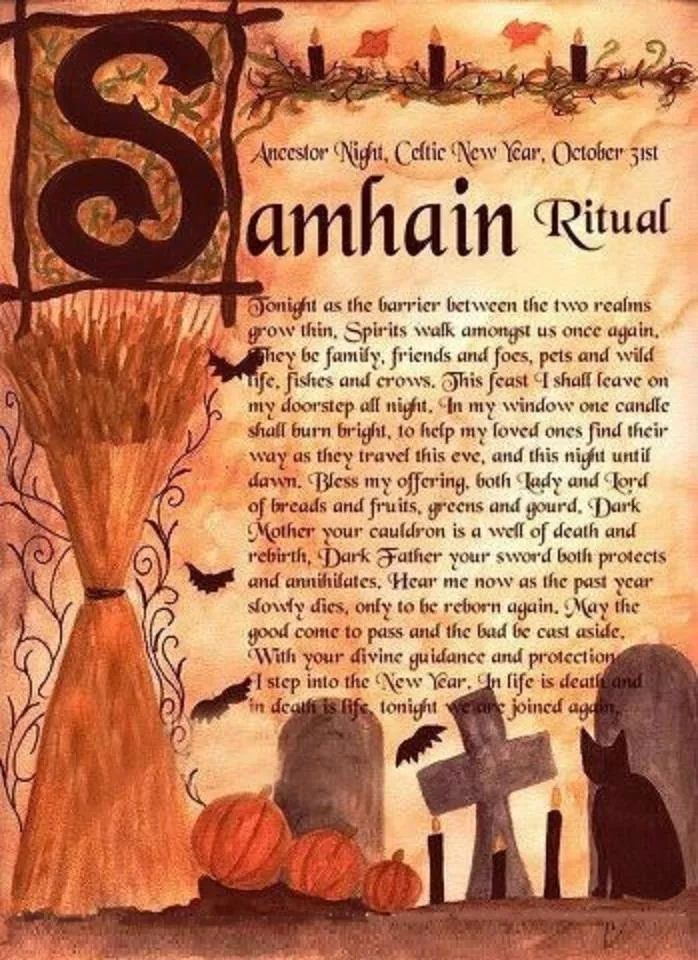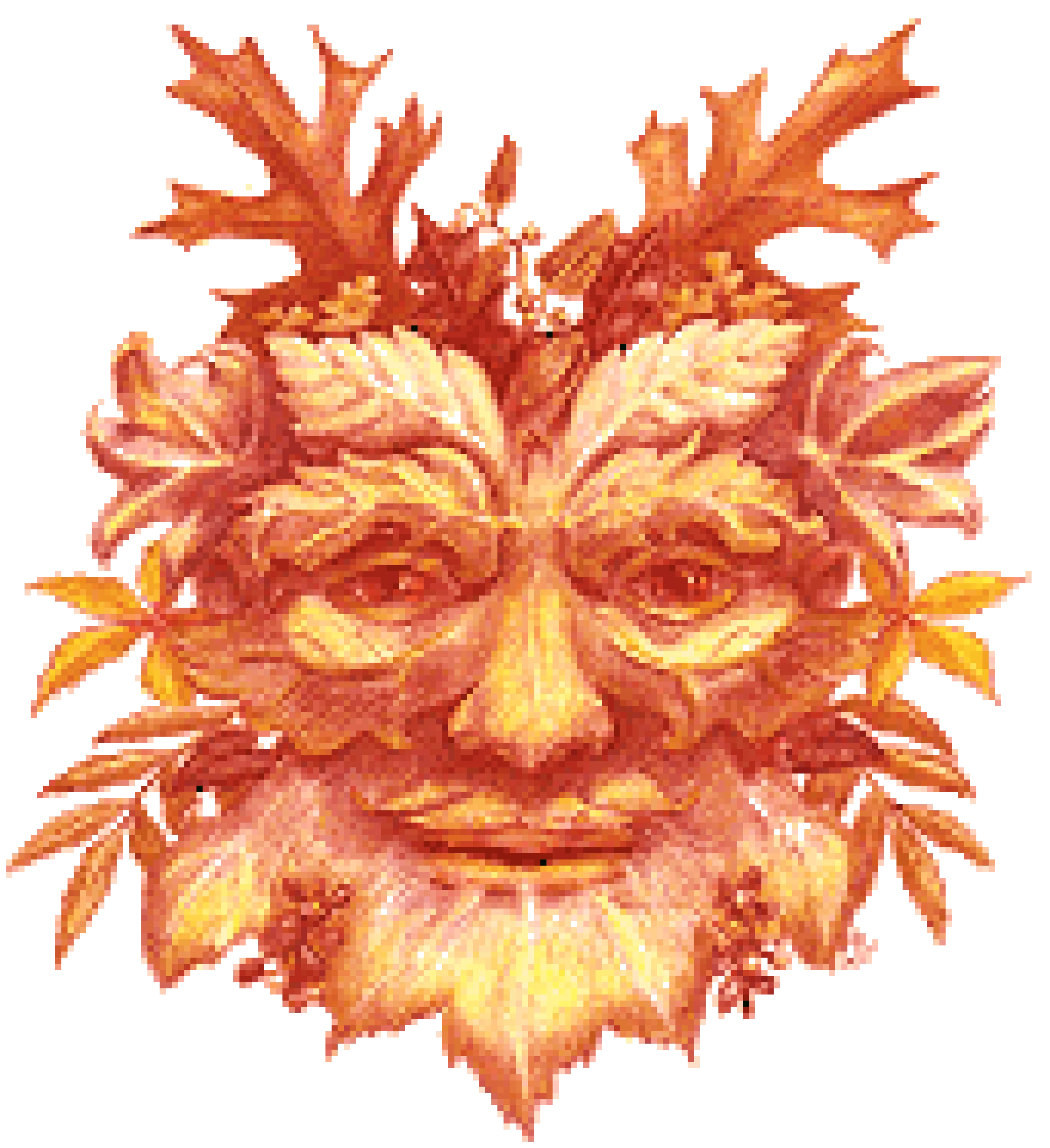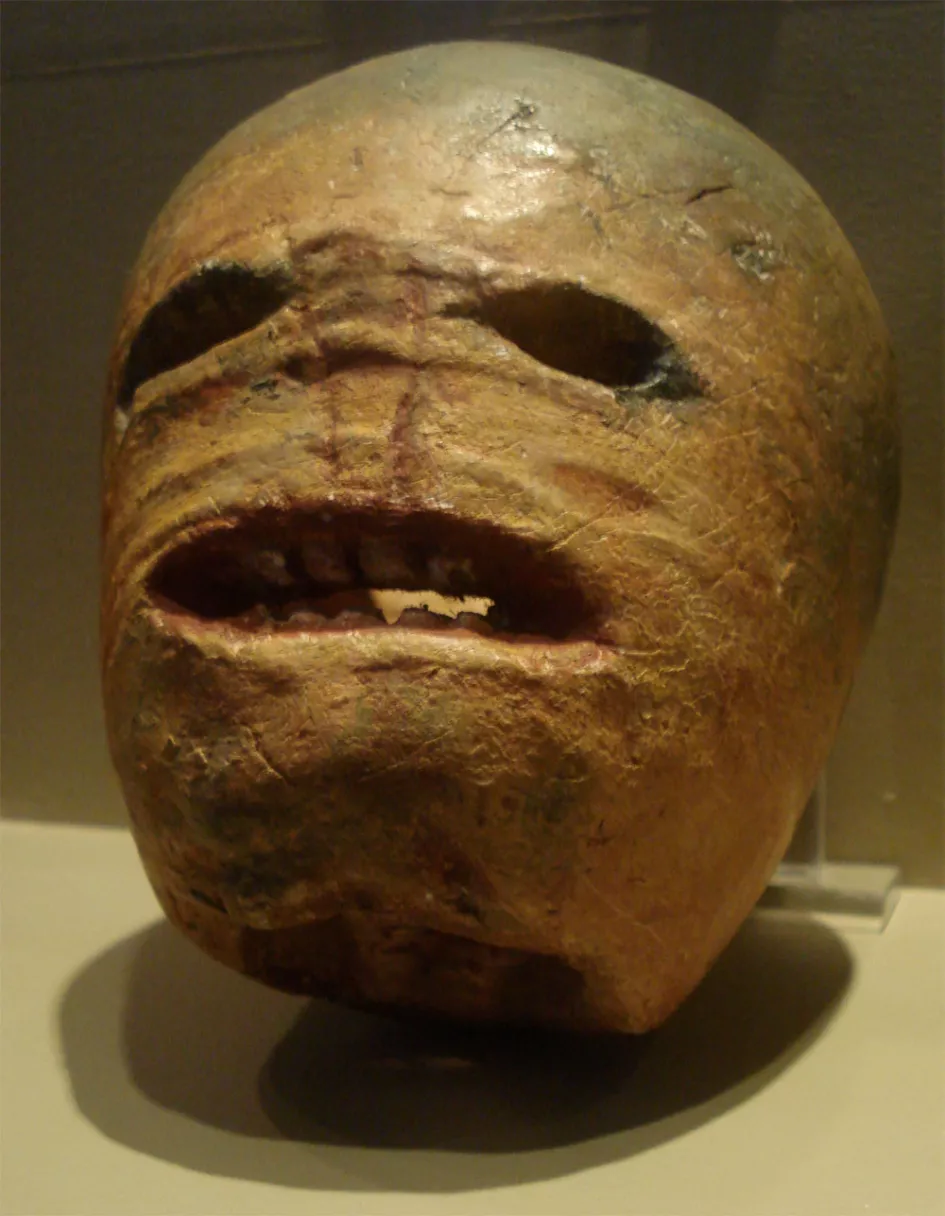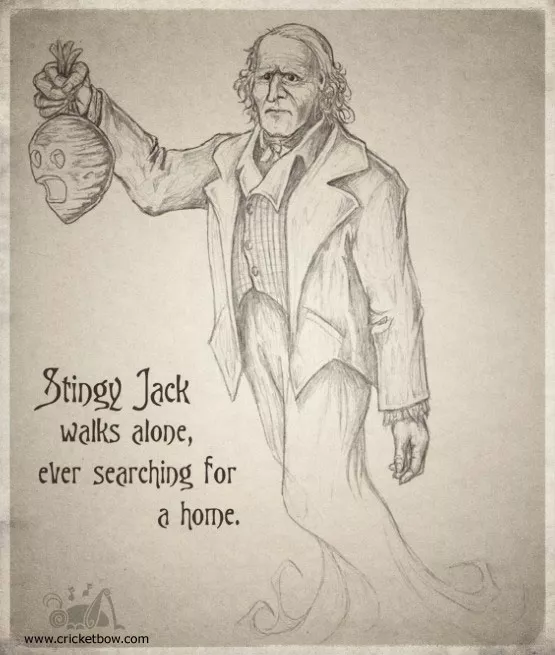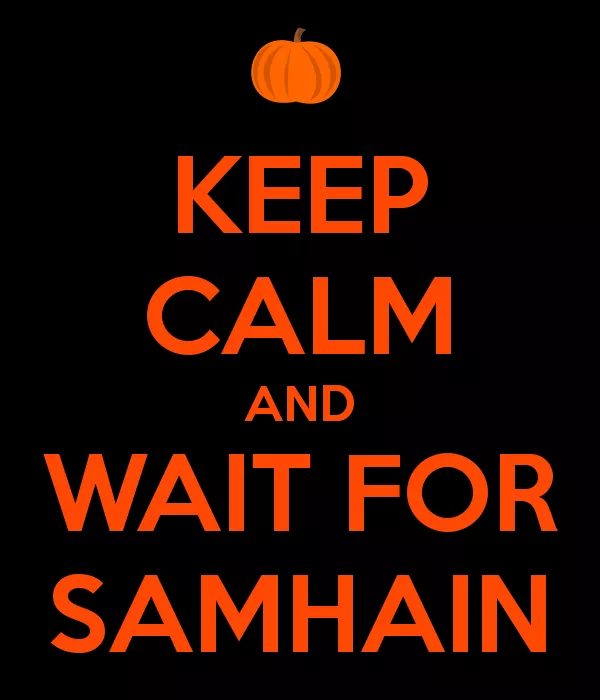The festival observed at this time was called Samhain (pronounced Sah-ween). Samhain also known as Samhainn, Sauin or Samain could be translated as end of summer or a season. It was the biggest and most significant holiday of the Celtic year. The Celts believed that at the time of Samhain, more so than any other time of the year, the ghosts of the dead were able to mingle with the living, because at Samhain the souls of those who had died during the year traveled into the otherworld. People gathered to sacrifice animals, fruits, and vegetables. They also lit bonfires in honor of the dead, to aid them on their journey, and to keep them away from the living. On that day all manner of beings were abroad: ghosts, fairies, and demons--all part of the dark and dread.
Samhain became the Halloween we are familiar with when Christian missionaries attempted to change the religious practices of the Celtic people. In the early centuries of the first millennium A.D., before missionaries such as St. Patrick and St. Columcille converted them to Christianity, the Celts practiced an elaborate religion through their priestly caste, the Druids, who were priests, poets, scientists and scholars all at once. As religious leaders, ritual specialists, and bearers of learning, the Druids were not unlike the very missionaries and monks who were to Christianize their people and brand them evil devil worshippers.
As a result of their efforts to wipe out "pagan" holidays, such as Samhain, the Christians succeeded in effecting major transformations in it. In 601 A.D. Pope Gregory the First issued a now famous edict to his missionaries concerning the native beliefs and customs of the peoples he hoped to convert. Rather than try to obliterate native peoples' customs and beliefs, the pope instructed his missionaries to use them: if a group of people worshipped a tree, rather than cut it down, he advised them to consecrate it to Christ and allow its continued worship.
In terms of spreading Christianity, this was a brilliant concept, and it became a basic approach used in Catholic missionary work. Church holy days were purposely set to coincide with native holy days. Christmas, for instance, was assigned the arbitrary date of December 25th because it corresponded with the mid-winter celebration of many peoples. Likewise, St. John's Day was set on the summer solstice.
Samhain, with its emphasis on the supernatural, was decidedly pagan. While missionaries identified their holy days with those observed by the Celts, they branded the earlier religion's supernatural deities as evil, and associated them with the devil. As representatives of the rival religion, Druids were considered evil worshippers of devilish or demonic gods and spirits. The Celtic underworld inevitably became identified with the Christian Hell.
The effects of this policy were to diminish but not totally eradicate the beliefs in the traditional gods. Celtic belief in supernatural creatures persisted, while the church made deliberate attempts to define them as being not merely dangerous, but malicious. Followers of the old religion went into hiding and were branded as witches.
The Christian feast of All Saints was assigned to November 1st. The day honored every Christian saint, especially those that did not otherwise have a special day devoted to them. This feast day was meant to substitute for Samhain, to draw the devotion of the Celtic peoples, and, finally, to replace it forever. That did not happen, but the traditional Celtic deities diminished in status, becoming fairies or leprechauns of more recent traditions.
The old beliefs associated with Samhain never died out entirely. The powerful symbolism of the traveling dead was too strong, and perhaps too basic to the human psyche, to be satisfied with the new, more abstract Catholic feast honoring saints. Recognizing that something that would subsume the original energy of Samhain was necessary, the church tried again to supplant it with a Christian feast day in the 9th century. This time it established November 2nd as All Souls Day--a day when the living prayed for the souls of all the dead. But, once again, the practice of retaining traditional customs while attempting to redefine them had a sustaining effect: the traditional beliefs and customs lived on, in new guises.
All Saints Day, otherwise known as All Hallows (hallowed means sanctified or holy), continued the ancient Celtic traditions. The evening prior to the day was the time of the most intense activity, both human and supernatural. People continued to celebrate All Hallows Eve as a time of the wandering dead, but the supernatural beings were now thought to be evil. The folk continued to propitiate those spirits (and their masked impersonators) by setting out gifts of food and drink. Subsequently, All Hallows Eve became Hallow Evening, which became Hallowe'en--an ancient Celtic, pre-Christian New Year's Day in contemporary dress.
Many supernatural creatures became associated with All Hallows. In Ireland fairies were numbered among the legendary creatures who roamed on Halloween. An old folk ballad called "Allison Gross" tells the story of how the fairy queen saved a man from a witch's spell on Halloween.
O Allison Gross, that lives in yon tower
the ugliest witch int he North Country...
She's turned me into an ugly worm
and gard me toddle around a tree...
But as it fell out last Hallow even
When the seely [fairy] court was riding by,
the Queen lighted down on a gowany bank
Not far from the tree where I wont to lie...
She's change me again to my own proper shape
And I no more toddle about the tree.
In old England cakes were made for the wandering souls, and people went " a' soulin' " for these "soul cakes." Halloween, a time of magic, also became a day of divination, with a host of magical beliefs: for instance, if persons hold a mirror on Halloween and walk backwards down the stairs to the basement, the face that appears in the mirror will be their next lover.
Virtually all present Halloween traditions can be traced to the ancient Celtic day of the dead. Halloween is a holiday of many mysterious customs, but each one has a history, or at least a story behind it. The wearing of costumes, for instance, and roaming from door to door demanding treats can be traced to the Celtic period and the first few centuries of the Christian era, when it was thought that the souls of the dead were out and around, along with fairies, witches, and demons. Offerings of food and drink were left out to placate them. As the centuries wore on, people began dressing like these dreadful creatures, performing antics in exchange for food and drink. This practice is called mumming, from which the practice of trick-or-treating evolved. To this day, witches, ghosts, and skeleton figures of the dead are among the favorite disguises. Halloween also retains some features that harken back to the original harvest holiday of Samhain, such as the customs of bobbing for apples and carving vegetables, as well as the fruits, nuts, and spices cider associated with the day.
We are all familar with modern Jack-o´-lanterns. However, traditional Jack-o´-lanterns were carved using turnips instead of pumpkins. (Turnips were a staple food crop they survived better in the some times harsh climates and sort growing seasons of the Britain Isles.) Terrifying faces were carved on these vegetables and they were placed in front of the door on All Hallow´s Eve to keep away malevolent spirits. Turnips were replaced by pumpkins after Scottish and other Celtic immigrants arrived in the USA. They noticed pumpkins were larger, easier to acquire and easier to carve. And who hasn't enjoyed pumpkin pie in the fall?
According to Celtic folklore, there once lived a mythical man in Ireland called "Stingy Jack", also known as "Drunk Jack" or "Jack of the Lantern".
Jack was a known thief, deceiver and manipulator. His notoriety became known even to the devil himself and Satan decided to see if it was true. Jack while being a being drunk, was still cunning and managed to fool the devil and make a deal with him. The two agreed that the devil would not be able to collect Jack´s soul when he died. After some years of heavy drinking and malicious behavior, Jack died and was denied access to heaven due to his behavior. So Jack went to gates of hell, but the devil held Jack to their deal not to collect his soul. Thus Jack was doomed to walk between dimensions, forever. The devil being a good sport in his victory over Jack, tossed him a few embers of hell, which Jack placed inside a carved turnip. Now Jack could see where to wander, with the fires of hell forever lighting his way in the dark netherworld trapped between heaven and hell.
Clan Campbell is NOT without it's share of ghost stories. Inveraray Castle is haunted by several ghosts. In 1644 the Marquesses of Argyll, Archibald Campbell, 1st Marquess of Argyll (1607–1661), was driven from the castle by the Marquis of Montrose. As the Marquesses departed the castle his harpist was left behind. The harpist had been caught peaking through a keyhole at the Lady of the house. For his he was hung. The ghost of the harpist has been seen still wandering the castle, wearing his Campbell tartan. It is said that he is heard playing his harp every day in the castle's Library.
Another legend is said to be of a ghost that warns of the death of a Campbell Chieftain. It is said that two days before the death of a chief a ghostly galleon, similar to the galleon on the Clan Campbell coat of arms is seen sailing up Loch Fynne. When the ship reaches land it does not stop, instead it continues to sail over land until it reaches the castle and claims it's victim. It is said that in the 18th century, one of the chieftains was so convinced that the ghost ship was coming to take him that he actually drank poison so he would not disappoint the galleon's ghostly crew.
On the 10th of July 1758 a Physician, William Hart, was walking along the castle grounds with two other men. The trio had all witnessed "a battle taking place in the sky, between Highland soldiers and French soldiers." They saw that the Highlanders had to retreat, and left behind many of their dead soldiers. Two ladies had also witnessed the battle in the sky. Several weeks later startling news arrived from America, telling of how a Highland regiment lost 300 of it's soldiers on July 10, 1758, while attacking a Fort Ticonderoga held by the French. The battle and the tale have been well documented in The Journal of the Clan Campbell Society (North America) vol.35, issue 4.
The ghost of a young woman who was murdered by the Jacobites has also been seen haunting the castle.
Today Halloween is becoming once again an adult holiday or masquerade, like in the New World birthplace of Mardi Gras, Mobile, Alabama. Men and women in every disguise imaginable are taking to the streets of big American cities and parading past grinningly carved, candlelit jack o'lanterns, re-enacting customs with a lengthy pedigree. Their masked antics challenge, mock, tease, and appease the dread forces of the night, of the soul, and of the otherworld that becomes our world on this night of reversible possibilities, inverted roles, and transcendency. In so doing, they are reaffirming death and its place as a part of life in an exhilarating celebration of a holy and magic evening.
